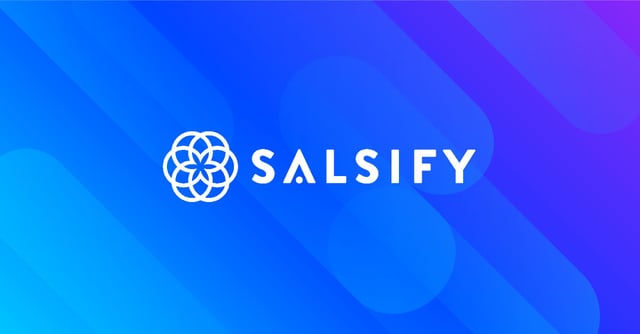The Global Data Synchronization Network (GDSN) is a beacon of streamlined efficiency in modern commerce. This interconnected network of data pools was meticulously designed to resolve the intricate challenge of sharing accurate and up-to-date product information among trading partners.
As brand manufacturers, retailers, and distributors cross paths, the GDSN plays a pivotal role in ensuring the seamless flow of product data throughout the supply chain.
Explore the fundamental workings of the GDSN and GDSN data pools, understand its purpose in the global business landscape, and discover its role in revolutionizing how industries handle product information.
What Is the GDSN?
The GDSN is a network of interconnected, interoperable data pools that trading partners use to share product data. The Global Data Synchronization Network ensures that trading partners can securely, accurately, and efficiently share high-quality product data.
What Is the GDSN Used for?
Brand manufacturers sell their products to hundreds of retailers and distributors. Retailers purchase products from thousands of manufacturers.
These trading partners rely on accurate supply chain product data to power the shipment of these products worldwide. However, with different systems and processes, brand manufacturers and retailers struggle to exchange accurate, high-quality product data.
The GDSN was designed to solve this problem.
How Does the GDSN Work?
The GDSN connects trading partners through a network of data pools, where standardized product data is stored and continually updated. The network ensures synchronized and accurate data exchange across the supply chain in real time.
This synchronization of product data between brands and retailers supports the movement of products across the global supply chain.
Breaking Down the Basics: GDSN Data
Trading partners use attributes within the GDSN to share crucial product data with retailers.
Data pools sync information with valid attributes defined by each brand and retailer. The continuous flow of accurate and up-to-date information ensures that brands and retailers always have the correct information — without fear of poor data quality.
Examples of GDSN data include:
- Logistics information: Data related to the planning, management, and execution of movement and storage of products throughout the supply chain.
- Shipping information: Data related to the movement and delivery of products.
- Regulatory information: Data related to product compliance, certifications, and legal requirements.
What Is the Difference Between the GDSN and GS1?
The GDSN and GS1 are both related to supply chain and product data management, supporting the standardization and synchronization of product data for improved accuracy and efficiency in global commerce.
GS1 is a not-for-profit, international organization that sets global product identification and communication standards. GS1 developed the GDSN to support the exchange of high-quality product data and continually updates it to match the current standards of product data sharing.
GDSN is a network that uses GS1 standards to facilitate the real-time sharing of standardized product data among trading partners in the supply chain.
What Is a GDSN Data Pool?
A GDSN data pool is a solution designed to centralize and syndicate product data. A data pool must be created to comply with GS1 standards and tested to ensure interoperability within the GDSN. Trading partners must use a GS1-certified data pool to synchronize data within the GDSN.
While there are currently more than 50 GS1-certified data pools, according to GS1, each data pool differs in its capabilities, user experience, and pricing.
GDSN Data Pool Providers
Salsify is a notable GDSN Data Pool provider, facilitating seamless data synchronization and exchange between suppliers and retailers in the GDSN. The Salsify GDSN Data Pool empowers the efficient sharing of accurate and up-to-date product information, enhancing collaboration and transparency across the supply chain.
What Are Global Identification Numbers?
Global identification numbers are standardized codes used to uniquely identify and label various elements in the supply chain.
Examples of global identification numbers include:
- Global Location Number (GLN): A standardized identifier that uniquely labels legal entities, trading partners, and locations within the supply chain.
- Global Trade Item Number (GTIN): A standardized identifier uniquely assigned to trade items.
How Are Global Identification Numbers Used? The Example of a Single Widget
Consider the example of a single widget sold within a package to a consumer.
In the lowest level of the hierarchy, a GTIN identifies the logistical information, such as packaging, dimensions, and weight, for the unit — all the details a retailer needs to sell the product.
However, if this single widget was sold to the retailer in a case that contains multiple units, an inner case, and other confusing variables, it suddenly becomes a confusing mess.
Why? There are separate product values that identify the components of the case separately.
In this case, a GTIN for the case (versus the single widget) and separate information for the inner case.
These separate sets of information ensure nothing is lost in the supply chain and help retailers and companies sell products seamlessly to customers without getting bogged down with internal mishaps.
How To Support Seamless Data Exchange Within the GDSN
This seamless data exchange is only possible if the right data is being used.
Teams must first prepare their product data within their GS1-certified data pool to deliver the required attributes and meet validation requirements. They must also set up the retailers that will receive the published data.
A GDSN data pool would support the storing and transforming of this product data — meeting GS1 requirements — to send to the GDSN. Once the product data is ready, teams can then publish validated product data to their data pool, which is then pushed to retailers through the global registry.
Which Companies Use the GDSN?
Many major retailers like Kroger, Lowes, and Amazon use the GDSN. This adoption allows companies, consumers, and retailers to benefit from automated content delivery. This process allows for efficient digital optimization that lowers the time required to launch new shopping experiences that attract and engage consumers.
Automated content delivery allows brands to build an airtight digital optimization process and get new, testable experiences online faster.
Watch John Apicella, GDSN product manager at Salsify, explain more about the history of GDSN and how retailers like Walmart leverage GDSN to align with their suppliers in this whiteboard session.



.svg)